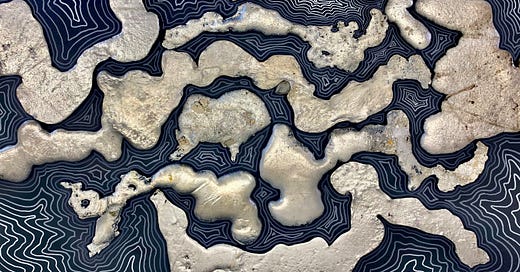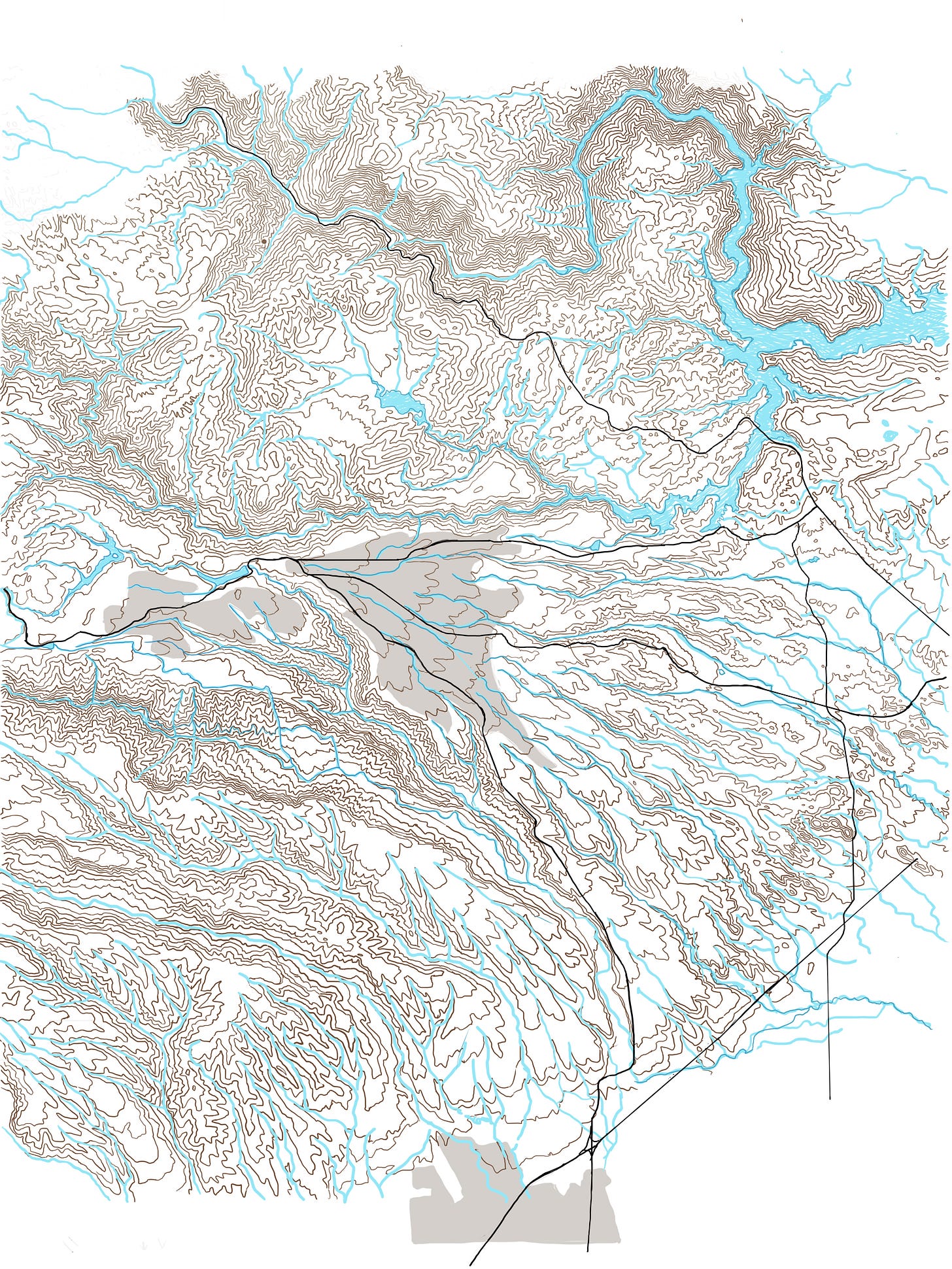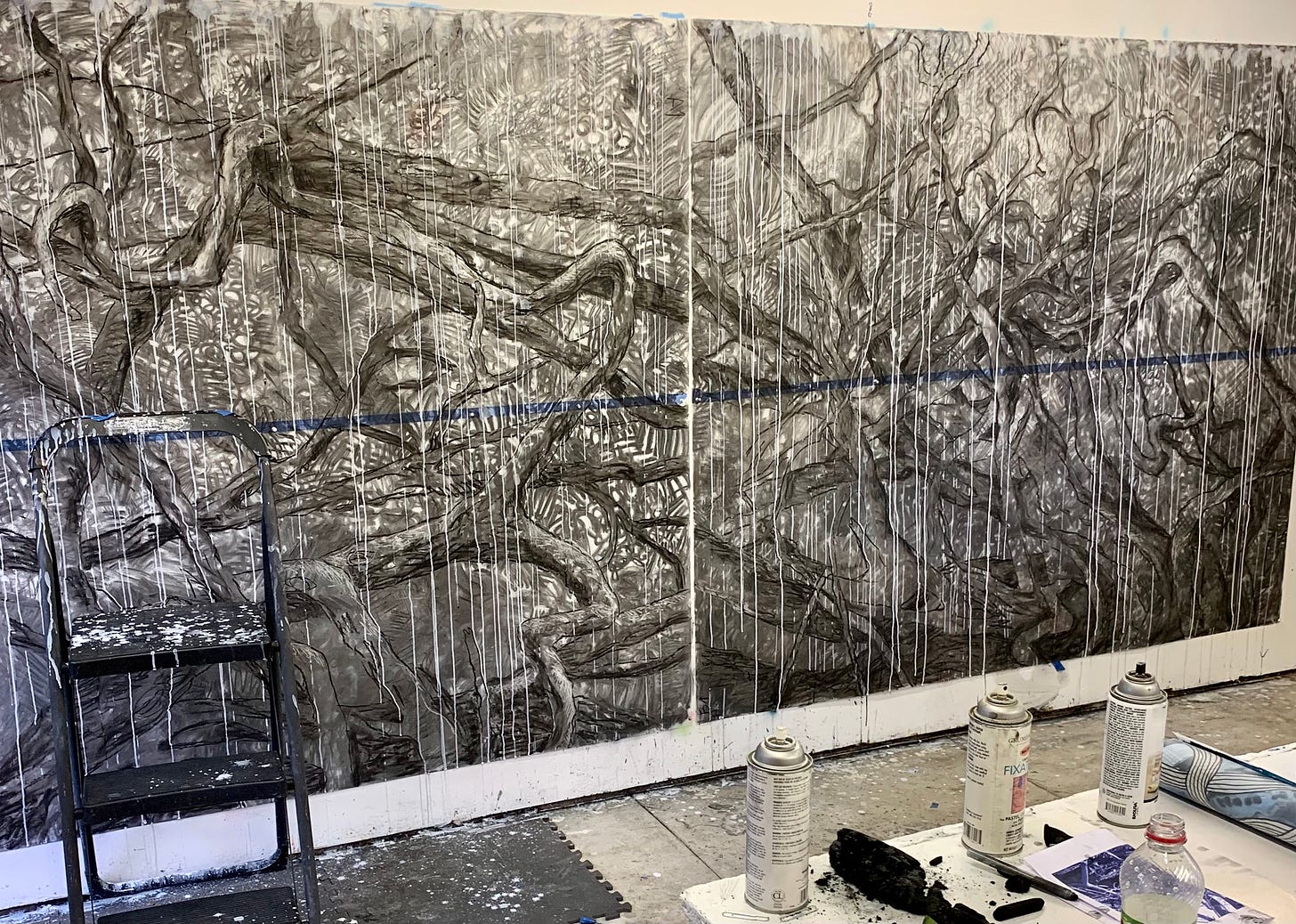Once again, Butte County is on fire. Just minutes ago, the San Francisco Chronicle posted this update. At the southern edge, you can see the orange triangle origin and how close it is to the deep canyon that separates it from the town of Paradise. Note both Chico and Red Bluff on the flat valley floor. In 2019, I interviewed fire experts to learn the relationship between wind and mountain fire. I’m guessing nothing has changed.
Park Fire update 8-12-24: 38% contained, 429,263 acres, 4 counties. Cause: arson
Landforms
The elevation of Paradise averages around 1,800 feet. Two deep canyons define the geography: one, carved by the West Branch of the Feather River, and the other, shaped by Butte Creek. Importing a U.S. Geological Survey map file into a drawing program with an iPadPro and an Apple Pencil, I traced curvaceous lines of contour flowing across and down the mountain. This interpretive drawing was a disturbingly obsessive process.
Lines of landforms contained a sensuality, as if I was drawing my pencil across a physical body. They showed me where the flat parts are, and how steep earth is in a particular spot, how millennia of winter runoff had carved these streams and canyons. I drew the few roads that gave escape. I followed watersheds, and started to understand where all that toxic runoff might go.
The lower the pressure off the coast, the stronger the wind moves across the surface of the mountains.
Wind can travel 750 mph, faster than the speed of sound. Wind is “a chunk of air moving relative to a stationary, external observer.” There are implications: should wind travel at 750 mph, we’d be doomed. Even 60 mph winds can destroy almost any stationary object in its path.
How to find the wind
Wind in Paradise, like some mythic, irrepressible creature roared like jet engines. Born in the jet stream, and descending to earth, winds collide with Sierra Nevada Mountains, like “water flowing over a rock in a stream.” It’s called a hydraulic jump as it compresses and picks up speed. Low pressure, an “offshore flow” pulls wind to the west.
I turned the drawing on its side and dripped white paint across the surface. Moving slowly, paint picked up bits of charcoal and pushed the charcoal to the sides, like a flowing river pushes floating objects to the shore.
Then I turned the drawing back. In process, charcoal from the lumber in the fire, compressed charcoal, acrylic on vellum, 7 x 12.’
A windshield, meant to protect us from wind, rendered transformed from fire.









